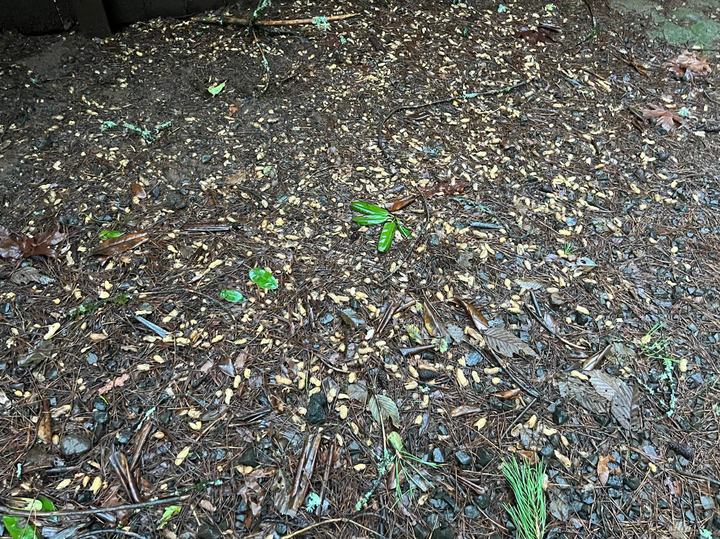🔴 Website 👉 https://u-s-news.com/
Telegram 👉 https://t.me/usnewscom_channel
I’m nervously waiting in an exam room at my doctor’s office to see if my body is about to enter anaphylaxis. Nurses monitor my vitals and check to see how open my breathing passages are. Technically, I could die within the next hour because I’ve ingested peanuts — the thing I’m most allergic to — but I did it on purpose.
Why would I have tested fate this way? Because I’m hoping to never face the possibility of anaphylaxis from peanuts again.
I’ve been deathly allergic to being exposed to even minuscule amounts of peanuts for as long as I can remember. That may sound dramatic, but they have killed people. Last year, 25-year-old Orla Ruth Baxendale died after eating cookies that did not list peanuts in their ingredients, but did contain them. Although she carried multiple EpiPens, they were not enough to counter the effects of the allergen.
I’ve been terrified of heartbreaking stories like Baxendale’s for as long as I can remember. When I was 13, I ruined my first kiss by pushing the guy away and crying, “You haven’t eaten any peanuts today, have you?”
Thankfully, I eventually found a supportive partner willing to give up peanuts for my safety. He forewent cuisines, restaurants and trips to countries that often use the nut, and obsessively began to read the fine print on food packages.
I traveled to Philadelphia in 2016 to meet with an allergist about my condition, but he refused to “challenge” me to determine how allergic I was. This process involves eating a tiny bit of peanut in a medical setting and waiting to see if you react, and if so, how badly. Instead, he told me I would never be able to overcome my allergy.
It may seem like a peanut allergy is manageable, since many foods do not contain them, but what most people don’t realize is that I’ve experienced ridicule, embarrassment and rejection most of my life because of my condition. Instead of having fond memories of attending birthday parties as a kid, I remember being mortified because I was forced to refuse cake to avoid a potential reaction. As a teen, I was berated by flight attendants for keeping them from being able to pass out peanuts to the rows around me.
On one flight, a passenger made sure I was aware just how disappointed he was to be seated near me.
“The only thing I look forward to when I’m flying is getting my pack of peanuts, and now I can’t have them,” he said loudly and angrily as I tried to disappear into my seat and remain hidden for the rest of the flight.
I’ve also been asked to leave or refused service by restaurants multiple times. In my early 20s, I was eager to go to dinner with new coworkers, only to learn the restaurant wasn’t comfortable serving me anything. I spent the rest of the evening awkwardly sitting at the table, sipping bottled water.
Last year, I turned down multiple invitations to one of the most popular restaurants in our town because the one time I tried to dine there, they told me they couldn’t make me anything, even though I only spotted one or two menu items containing peanuts. They weren’t even comfortable with me ordering a cocktail.
“It’s close quarters in our kitchen, and we don’t want to get sued!” I was warned.
Even worse than that are the group trips I haven’t been able to take. I once requested time off from work and booked travel to attend the New Orleans Jazz Fest with friends. Right before we were supposed to leave, one of my (so-called) friends told me I could no longer go with them because too many people were concerned that eating out with me would be too hard.
Things got even more unbelievable last Thanksgiving when my fiancé and I purchased our first home together… only to discover that our next-door neighbor regularly buys 40-pound bags of peanuts to feed to squirrels in the neighborhood. Somehow, we hadn’t seen any signs of this when we toured the house, but once we moved in, we found thousands of peanut shells around his property — more than I’ve ever seen in one place in my life. Peanut shells don’t disintegrate easily, so they’d been collecting for years, and our backyard was a deathtrap for me.
Courtesy of Summer Austin
After living in our new house for a few weeks, my eye swelled up after I toweled off my dog’s paws. I wanted to love my new home — and I didn’t want to worry that I was constantly at risk of an allergic reaction or even death — so I called a new allergist. That’s when I heard the six most shocking words a doctor has ever told me: “I’ll cure you of your allergy.”
After so many years of being told there was nothing I could do to overcome my condition, I was skeptical, but excited. Could I really be cured? I was willing to do whatever it took to find out.
A few weeks later, I began Oral Immunotherapy, or OIT. This process involves ingesting 28 different doses of peanuts over seven months and increasing the strength of the dose each week. After I consumed the peanuts, I was monitored for a reaction by a medical professional in my doctor’s office and, if everything went OK, I took home a week’s worth of doses to eat each night — with Benadryl and an EpiPen nearby just in case.
My doctor told me he has desensitized almost 300 people over the last six years, 150 of whom had peanut allergies, but OIT also works for milk, wheat, soy, egg and tree nut allergies as well.
Even though the first dose of peanuts I was given was practically microscopic, I was still terrified to eat them. I was afraid that ingesting this substance I had been desperately avoiding my entire life would make me feel like I was dying, and I worried I would not be able to distinguish between a panic attack and a real reaction. This did happen during the first few doses I ate. Anytime I thought about what I was doing or a nurse asked how I was feeling, I immediately felt my throat start to tighten. My doctor reassured me that they would be able to tell what was going on in my body even if I couldn’t. They closely monitored my vitals, checked how open my air passages were, and listened to my breathing. My doctor also suggested I bring a distraction, like my laptop to watch my favorite show, or a book.
The first few doses I took were so small my body couldn’t physically react to them, but they served to introduce my body to this foreign substance and initiate the therapy.

Courtesy of Summer Austin
I had my first reaction about halfway through the process. It wasn’t what I was expecting — my mouth wasn’t itchy, my eyes didn’t swell and my throat didn’t close. Instead, about 40 minutes into my second dose of the day (in the early phases, I could take multiple doses a day, with a one-hour wait period between each one), I began to feel a lot of stomach pain. I started sweating and alerted one of the nurses that I wasn’t doing well. She went to get the doctor, and before I knew what was happening, I vomited. A few minutes later, I felt totally normal. My body had rid itself of the allergen and was no longer distressed.
Because of my reaction, I had to retreat to a lower dose. When I tried to increase my doses again, I experienced unpleasant side effects like nausea and acid reflux. It took a few months to get things ironed out, so I stayed on the same dose for much longer than a week to prevent another reaction.
When I reached the one-gram mark for peanuts, we celebrated! Now I was “bite proof,” which meant I could eat anything labeled “may contain peanuts” or “manufactured using the same equipment as peanuts,” and not be at risk of having a severe reaction. I could also safely eat in restaurants where cross-contamination might be an issue because I was not likely to react. However, I was told I still shouldn’t eat anything with peanuts, since there’s a limit to my tolerance, and my goal wasn’t to “free eat” them.



Courtesy of Summer Austin
When I moved beyond the one-gram doses, I had to slow down again, but after nearly a year, I finally reached my goal of a five-gram maintenance dose, which is the equivalent of one teaspoon of peanut butter or five peanuts. To keep my tolerance indefinitely, I will need to ingest this dose every day for three years, and then after that, at least once a month for the rest of my life. If I took an entire year off from eating peanuts, my allergy could return.
OIT was a significant investment of my time and emotions, but it changed my life. I no longer have the constant fear that a mistake or someone else’s carelessness could kill me. My allergist also suggested my now-husband and I honeymoon in Thailand — a lifelong dream of mine that was previously out of reach because of the prevalence of peanuts in Thai cuisine.
When I told a childhood friend I was now eating peanuts every day, she was shocked. “I really can’t believe it! It feels unreal!” she told me. “Your whole life has changed.”
I admit that since completing my treatment, there have been a few moments of panic after I’ve ordered my meal in a restaurant, and I realized I hadn’t told the server about the severity of my peanut allergy. I’m not sure that anxiety will ever go away or if it’ll ever feel normal to buy peanuts at the grocery store. I spent my entire life afraid that this little nut could kill me, and it’s hard to believe that I’m safe and able to do things that most people take for granted. This new freedom is strange but wonderful, and I’m not taking it for granted. I’m confident that if I continue my maintenance doses, I can live the happy and healthy life I always dreamed of having.



Courtesy of Summer Austin
Summer Austin is a Portland-based writer with a passion for food, travel, and pop culture. She has previously worked for Food Network Magazine and OK! and has been published in Los Angeles magazine, The Daily Meal, and more. She also shares highlights from her trips to nearly 30 countries on her blog, TravelingSummer.com. When she’s not writing, Summer can be found exploring new restaurants, skiing and snowboarding, or planning her next adventure.
Do you have a compelling personal story you’d like to see published on HuffPost? Find out what we’re looking for here and send us a pitch at [email protected].

